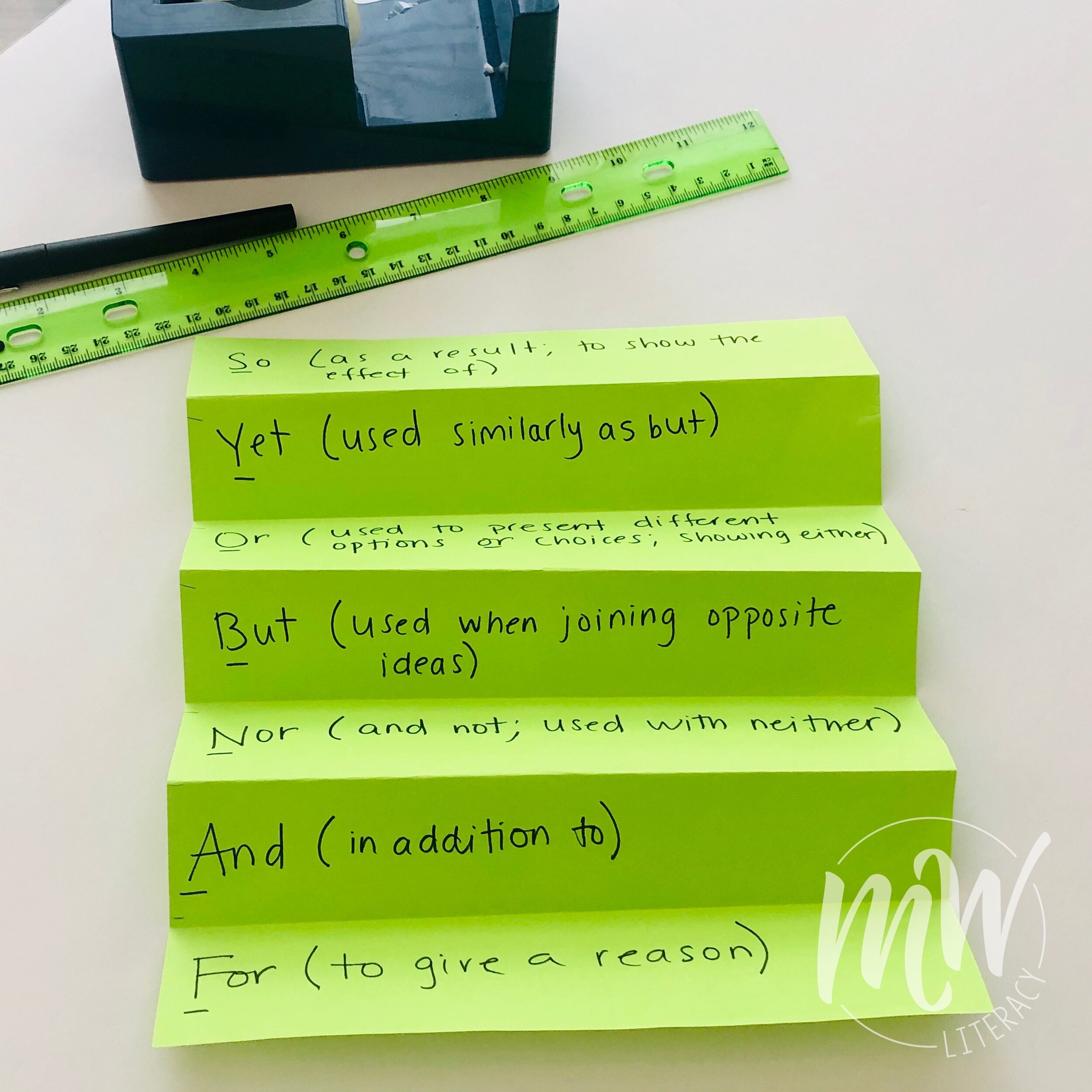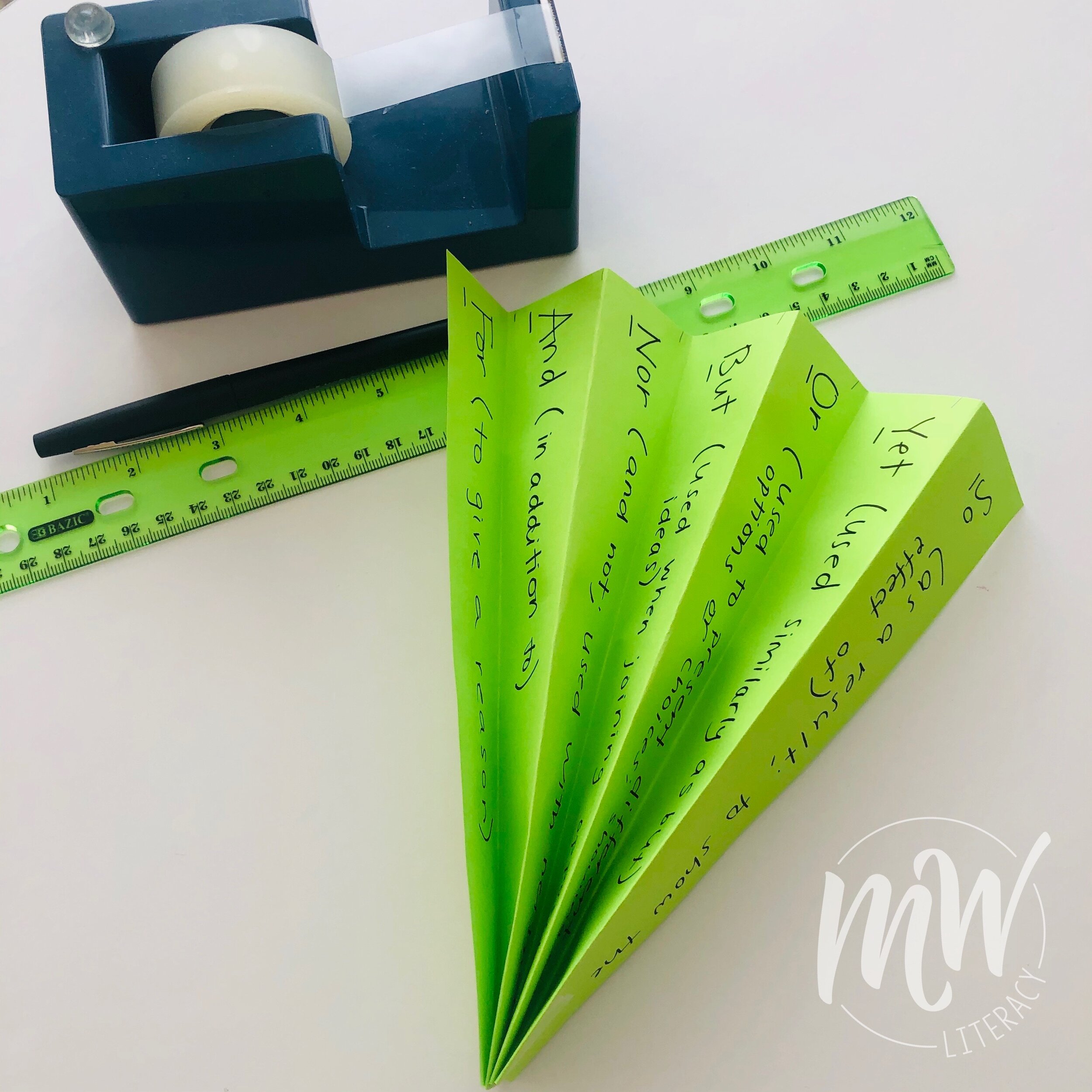Conjunction junction, what’s your function? were the famous Schoolhouse Rock words. (And it’s still impossible to talk about conjunctions without hearing them.) There are three categories of conjunctions: coordinating, subordinating, and correlative. They are all specific words that connect phrases, words, and clauses. This post focuses exclusively on coordinating conjunctions.
There are seven coordinating conjunctions that can be easily remembered using the acronym FANBOYS: for, and, nor, but, or, yet, so. A good visual is what always helps me most, so I designed this coordinating conjunction fan to demonstrate the usage of these conjunctions for all those other visual learners out there. Also, kids LOVE putting these together. To make this handheld fan, follow these simple steps:
What You’ll Need
Standard size (8.5in x 11in) sheet of paper
Marker
Ruler
Tape
How To
Use a rule (or you can eyeball it!) to make roughly 1.5in marks
Make six horizontal folds. This will then allow for seven spaces, one for each conjunction. There is enough space to also include the purpose for and / or an example of each coordinating conjunction.
Write each conjunction and purpose (see below for details) in each space.
On the bottom where the conjunction FOR is written, you can flip up the to the opposite side and write COORDINATING CONJUNCTIONS.
Tape the bottom folds together to create a fan.
For a set-by-step video, you can hop on over to my Instagram page and watch it the reels section.
For
Purpose: To give a reason.
Example: I brought my umbrella with me when I left the house, for it was supposed to rain.
And
Purpose: To join words, phrases, or sentences that show a similar idea.
Example: Sam finished his homework, and then he ate his dinner.
Nor
Purpose: To introduce or present a further negative idea or statement.
Example: Jen does not like to travel in airplanes, nor does she like to travel on trains.
But
Purpose: To show contrasting or opposite ideas.
Example: They wanted to bake muffins, but they didn’t have all of the ingredients.
Or
Purpose: To show a choice or different options.
Example: We can go to the beach this morning, or we can go this afternoon.
Yet
Purpose: To join two ideas that are opposite. Similar to the use of the word but.
Example: Pete studied every day for the test, yet he still did not do as well as he had hoped.
So
Purpose: To show the result or effect of something (not to be confused with so as an adverb, meaning to a great extent)
Example: Three feet of snow fell last night, so we were not able to leave the house today.
I hope these examples and demonstration help your learners master coordinating conjunctions a bit more easily!
STAY CONNECTED


